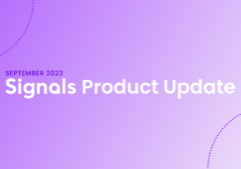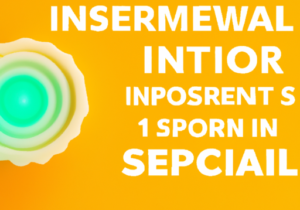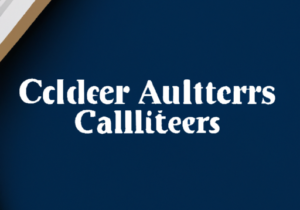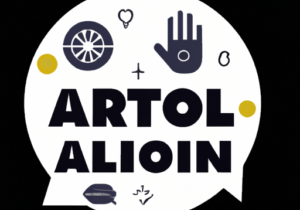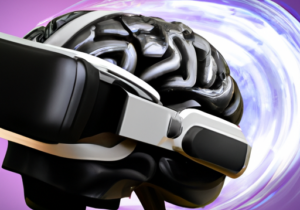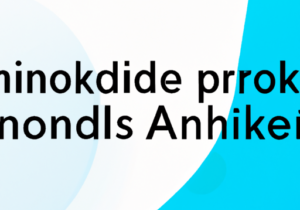Table Of Contents
- What Is a Chatbot?
- What Is Lead Generation?
- #1 Targeting the Right Audience
- How To Identify Your Ideal Customer
- #2 Use Personalization In Your Chatbots
- #3 Create a Lead Magnet In Your Conversations
- #4 Nurture Your Leads With Chatbots
- #5 Measuring The Success Of Chatbot Lead Generation
- Use Chatbots in Your Lead Generation Strategy
What Is a Chatbot?
Chatbots are computer programs engineered to simulate human-like conversations. Leveraging natural language processing and machine learning, they have surged in popularity and versatility, finding applications across customer service, e-commerce, and lead generation. Whether providing 24/7 assistance in customer support, enhancing the shopping experience in e-commerce, or streamlining lead qualification in the marketing process, chatbots have become indispensable tools, enhancing efficiency and engagement while offering businesses a competitive edge. With their continuing evolution, chatbots remain at the forefront of technology, promising innovative transformations in digital interactions and user experiences.
What Is Lead Generation?
Lead generation is the process of identifying and cultivating potential customers for a business. Chatbots are particularly well-suited for this task because of their ability to engage in dynamic conversations with users, effectively capturing valuable information about their needs and preferences. By integrating chatbots into their lead generation strategy, businesses not only enhance efficiency through automation but also gain the advantage of more accurate lead profiling, enabling more targeted and personalized follow-up actions that can significantly improve conversion rates and the overall effectiveness of their marketing efforts.
The popularity of chatbots in lead generation is also driven by the rise of messaging platforms and mobile devices, which make it easier for users to interact with chatbots. Additionally, chatbots can be integrated into websites, social media, and other digital channels, making them accessible to a wide range of users. With the increasing adoption of chatbots, they are becoming more sophisticated and able to perform a wide range of tasks with more accuracy, thus they are now considered a powerful lead-generation tool.
#1 Targeting the Right Audience
Identifying the ideal customer for your business is a foundational step in successful chatbot lead generation. This entails not only recognizing your target audience but also delving into a deeper understanding of their needs, pain points, and the underlying motivations driving their purchasing decisions. Armed with this nuanced knowledge, you can craft a chatbot that goes beyond generic interactions to provide a highly personalized and tailored experience that resonates with the unique preferences and interests of your target demographic. In doing so, you not only enhance lead generation efforts but also solidify your position as a brand that truly understands and caters to the specific requirements of its customers.
How To Identify Your Ideal Customer
To identify your ideal customer, you can start by analyzing your current customer base. Look at demographics, such as age, gender, and location, as well as purchase history, online behavior, and other data. You can also conduct market research, such as surveys and focus groups, to gather more information about your target audience.
Once you have a clear understanding of your target audience, you can create a buyer persona. A buyer persona is a fictional representation of your ideal customer, based on the data you’ve collected. It includes information such as demographics, pain points, and buying habits. Having a buyer persona will help you to create a more effective chatbot that is tailored to the specific needs of your target audience. This personalized approach enhances user engagement and conversion rates, ultimately leading to more successful lead generation efforts.
Creating a buyer persona will also help you to develop a more targeted marketing strategy and to create a more personalized user experience for your chatbot. With a buyer persona in hand, you can create a chatbot that speaks to the specific needs and interests of your target audience, increasing the chances of converting them into leads.
#2 Use Personalization In Your Chatbots
Personalization is a crucial aspect of chatbot lead generation, as it allows businesses to create a unique and personalized experience for each user. By using data, such as the user’s browsing history, purchase history, and behavior, businesses can tailor the chatbot’s responses and offers to the individual user.
To personalize the chatbot experience, businesses can use data from various sources, such as website analytics, customer relationship management (CRM) systems, and social media platforms. This data can be used to create a comprehensive profile of each user, which can be used to personalize the chatbot’s responses and offers.
Personalized content and offers can be used to increase the effectiveness of the chatbot. By providing users with customized content and offers, businesses can increase the chances of converting them into leads. For example, if a user shows interest in a specific product, the chatbot can provide them with personalized offers and discounts on that product. Similarly, if a user has previously shown interest in a particular topic, the chatbot can provide them with personalized content related to that topic.
Personalized content and offers can also be used to nurture leads, by providing them with relevant information and resources. This can help to build trust and establish a long-term relationship with the lead, increasing the chances of converting them into a customer.
In summary, by personalizing the chatbot experience, businesses can create a more engaging and effective lead-generation strategy. Personalization enables them to tailor the chatbot’s responses and offers to the individual user. This increases the chances of converting them into leads and fostering long-lasting relationships with their target audience.
#3 Create a Lead Magnet In Your Conversations
A lead magnet is a valuable resource that is offered to users in exchange for their contact information. Lead magnets can be in various forms such as e-books, webinars, whitepapers, checklists, templates, and many more. By using a lead magnet, businesses can capture the contact information of potential leads and use it to nurture them.
Offering a lead magnet can be a powerful way to generate leads through a chatbot. The chatbot can ask users if they are interested in receiving a valuable resource, such as an e-book or a webinar, and then collect their contact information in exchange. This can be done by asking the user to provide their email address or other contact details.
Once the user has provided their contact information, businesses can use it to nurture the lead. This can be done by sending them relevant information, resources, and offers through email or other channels. The goal of nurturing leads is to build a relationship with the lead and to educate them about the business’s products or services.
Utilizing a lead magnet can also be a powerful strategy for segmenting leads based on their unique interests, offering businesses valuable insights into the specific preferences and needs of each lead. Armed with this granular understanding, companies can then personalize their communication and tailor their offers in a highly targeted manner, creating a more compelling and relevant experience for potential customers. By implementing this segmentation approach, businesses not only enhance their lead generation efforts but also significantly improve their ability to nurture and convert leads into loyal customers, thereby boosting the overall effectiveness of their marketing strategies.
#4 Nurture Your Leads With Chatbots
Nurturing leads is an important step in the lead generation process, as it helps businesses to build a relationship with the lead and to educate them about the business’s products or services. By nurturing leads, businesses can increase the chances of converting them into customers.
When it comes to nurturing leads through a chatbot, it’s important to determine the customer’s level of interest and readiness to buy. This can be done by asking the customer questions about their needs and pain points, as well as their budget and decision-making timeline. The chatbot can use this information to segment leads based on their interests and readiness to buy.
Once the customer’s level of interest and readiness to buy have been determined, businesses can create a targeted follow-up strategy. This can include sending personalized emails, offers, and resources to the lead, as well as reaching out to them through other channels, such as social media and phone. The goal of the follow-up strategy is to continue building a relationship with the lead and to educate them about the business’s products or services.
A follow-up strategy can also include automated drip campaigns, which are a series of pre-written emails that are sent to the lead at specific intervals. Drip campaigns can be used to provide the lead with relevant information and resources over time, helping to educate them about the business’s products or services.
#5 Measuring The Success Of Chatbot Lead Generation
Measuring the success of a chatbot lead generation strategy is crucial for understanding the impact of the chatbot on the business and for making adjustments as needed. Setting clear goals and metrics is the first step in measuring the success of the chatbot. Additionally, regularly tracking and analyzing the data, such as conversion rates and engagement levels, can provide actionable insights to fine-tune and enhance the chatbot’s performance over time.
Some key metrics to track when measuring the success of a chatbot lead generation strategy include:
- Number of leads generated: This metric measures the number of leads that have been captured through the chatbot.
- Lead conversion rate: This metric measures the percentage of leads that have been converted into customers.
- Customer retention rate: This metric measures the percentage of customers that have returned to make a repeat purchase.
- Return on investment (ROI): This metric measures the return on investment of the chatbot lead generation strategy.
In addition to setting clear goals and metrics, it’s also important to analyze the data that is collected through the chatbot. By analyzing the data, businesses can understand the customer’s behavior, preferences, and pain points. This information can be used to make adjustments to the chatbot lead generation strategy, such as personalizing the chatbot experience or changing the lead magnet that is offered.
It’s also worth considering A/B testing different elements of the chatbot flow to optimize performance. For example, testing various lead magnets, different follow-up strategies, and even the tone and style of interactions can provide valuable insights into what resonates most effectively with your specific target audience.
Use Chatbots in Your Lead Generation Strategy
The Signals platform stands as a game-changing solution that empowers companies to harness the potential of chatbots in their lead-generation strategy. Beyond mere functionality, Signals’ chatbot is a versatile tool that enables businesses to precisely target their desired audience. This is achieved through a comprehensive understanding of the ideal customer, the creation of detailed buyer personas, and a deeply personalized chatbot experience that leverages data-driven insights.
For those looking to elevate their lead generation strategies to new heights, Signals chatbot presents a compelling solution with the promise of driving increased conversions and fostering business growth. You can schedule a personalized demo to witness firsthand how Signals can revolutionize your lead generation efforts and set you on the path to generating more high-quality leads for your business.
READ MORE
Start seeing your Buyers' signals
Signals is helping companies automate, grow, and close sales pipeline with industry-leading predictive intent scoring, lead generation, and real-time engagement.









